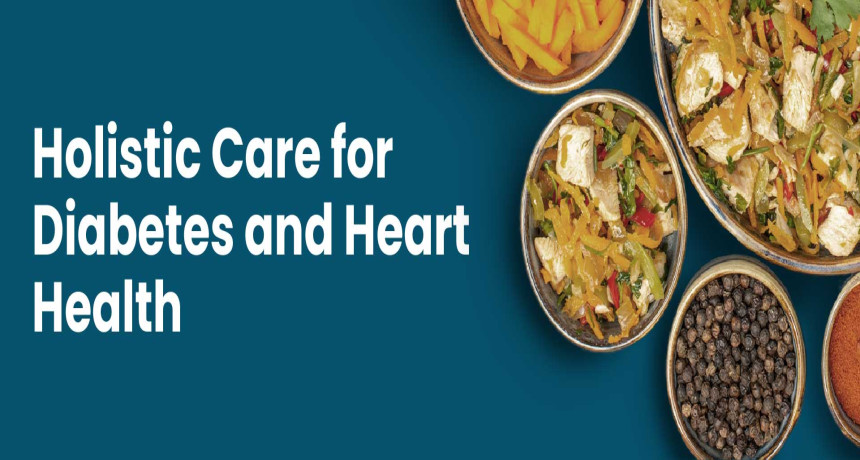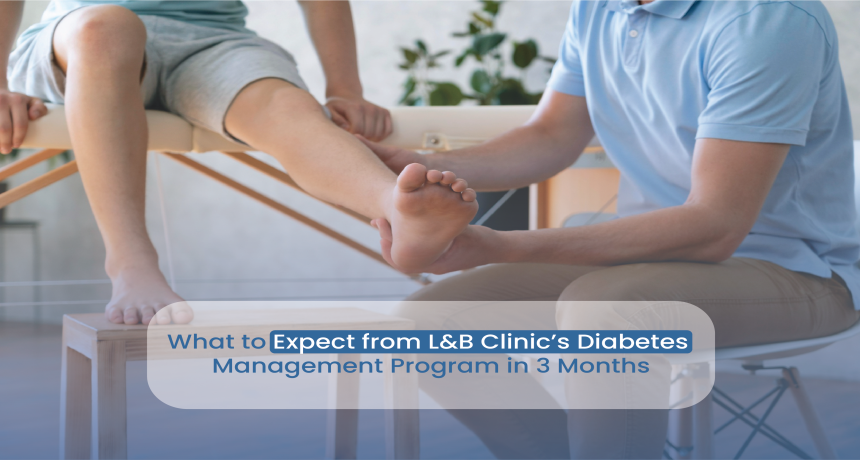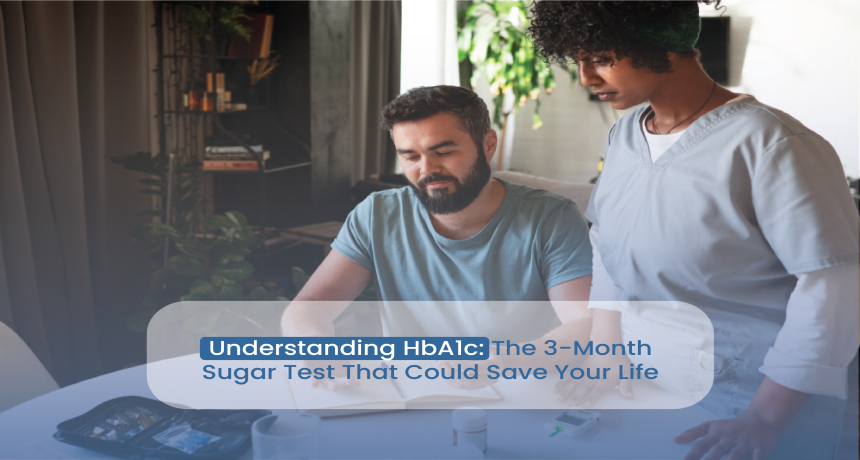Glycemic Index: Your Key to Stable Blood Sugar and Optimal Health
2024-04-22 Simplifying Complex GI Index For You! Are you tired of the endless cycle of energy crashes and cravings that come with unstable blood sugar levels? You're not alone. According to a study by the Centers for Disease Control and Prevention, over 100 million Indian adults are living with diabetes or prediabetes, and many more are struggling to maintain balanced blood sugar levels. But what if there was a simple, effective tool that could help you make informed food choices and take control of your health? Enter the glycemic index. The glycemic index (GI) is a game-changing tool that ranks foods based on how quickly they raise blood sugar levels. By understanding how different foods impact your body, you can make smart dietary decisions that promote stable blood sugar, reduce your risk of chronic diseases, and help you feel your best. In fact, a study published in the American Journal of Clinical Nutrition found that following a low GI diet can significantly improve blood sugar control and reduce the risk of type 2 diabetes. But how does the glycemic index work, and how can you incorporate it into your daily life? In this comprehensive guide, we'll explore the science behind the GI, dive deep into its benefits, and provide practical tips for using it to optimize your health. Whether you're living with diabetes, looking to lose weight, or simply striving to make healthier food choices, understanding the glycemic index is essential. So, are you ready to take control of your blood sugar and transform your health? Let's get started! The glycemic index is a scale that assigns a number to carbohydrate-containing foods according to how much they raise blood sugar levels after consumption. Foods are ranked on a scale of 0 to 100, with pure glucose (sugar) given a value of 100. The lower a food's glycemic index, the slower blood sugar rises after eating that food. On the other hand, foods with a high GI are quickly digested and absorbed, causing a rapid spike in blood sugar. The GI is divided into three categories: • Low GI: 55 or less • Medium GI: 56-69 • High GI: 70 or more It's important to note that the GI is different from the glycemic load (GL), which takes into account both the GI of a food and the amount of carbohydrates in a serving. While the GI tells you how quickly a food spikes your blood sugar, the GL tells you how much that serving of food is likely to raise your blood sugar level. Several factors can influence a food's GI, including: 1. Fiber content: High-fiber foods tend to have a lower GI because fiber slows down digestion and the absorption of glucose into the bloodstream. 2. Fat and protein content: Foods high in fat and protein generally have a lower GI, as these nutrients slow down the digestion process. 3. Ripeness: As fruits ripen, their GI tends to increase due to the conversion of complex carbohydrates into simple sugars. 4. Processing: Highly processed foods often have a higher GI because processing removes fiber and other nutrients that slow digestion. 5. Cooking method: How you prepare a food can affect its GI. For example, pasta cooked al dente has a lower GI than pasta cooked until soft. Following a low glycemic diet offers numerous potential health benefits: 1. Improved blood sugar control: By choosing low GI foods, you can minimize rapid spikes in blood sugar, which is particularly important for people with diabetes or prediabetes. 2. Weight management: Low GI foods are often more filling and may help with weight loss and maintenance by reducing hunger and cravings. 3. Heart health: A low glycemic diet may help lower cholesterol levels and reduce the risk of heart disease. 4. Increased energy levels: Stabilizing blood sugar levels can help maintain steady energy throughout the day, preventing the "crash" often experienced after consuming high GI foods. To reap the benefits of a low glycemic diet, focus on incorporating the following foods: • Non-starchy vegetables: Broccoli, spinach, tomatoes, cucumbers, peppers • Whole grains: Quinoa, barley, oats, whole-grain bread • Legumes: Lentils, chickpeas, kidney beans, black beans • Fruits: Apples, pears, berries, citrus fruits • Healthy fats: Avocado, nuts, seeds, olive oil • Lean proteins: Chicken, fish, tofu, eggs At the same time, try to limit your intake of high GI foods, such as: • Refined carbohydrates: White bread, white rice, pastries, sugary cereals • Sugary drinks: Soda, fruit juices, sports drinks • Processed snacks: Chips, crackers, cookies • Sweetened dairy products: Ice cream, flavoured yoghurt 1. Read nutrition labels: Pay attention to the total carbohydrates and fibre content in the foods you choose. Opt for products with higher fibre and lower total carbs. 2. Combine foods strategically: Pairing high GI foods with low GI foods, protein, or healthy fats can help balance the overall glycemic impact of a meal. For example, top a slice of whole-grain toast with avocado and eggs. 3. Practice portion control: Even low GI foods can raise blood sugar levels if consumed in large quantities. Be mindful of serving sizes and listen to your hunger cues. 4. Plan ahead: Prepare meals and snacks in advance to ensure you always have low GI options on hand, reducing the temptation to reach for high GI convenience foods. 5. Consult with a healthcare professional: If you have a specific health condition, such as diabetes, work with a registered dietitian or your healthcare provider to create a personalised low glycemic meal plan. For individuals with diabetes, the glycemic index is a particularly valuable tool for managing blood sugar levels. By choosing low GI foods and monitoring portion sizes, people with diabetes can help prevent dangerous spikes and drops in blood sugar. However, it's crucial to remember that the GI is just one factor to consider when making dietary choices. People with diabetes should also pay attention to total carbohydrate intake, fat and protein content, and overall nutrition. 1. Are all low GI foods healthy? Not necessarily. Some foods, like potato chips, have a lower GI due to their fat content but are still considered unhealthy due to their low nutritional value. Always consider the overall nutritional profile of a food, not just its GI. 2. Can I still eat high GI foods? Yes, you can still enjoy high GI foods in moderation as part of a balanced diet. The key is to pair them with low GI foods, healthy fats, and lean proteins to minimize their impact on blood sugar levels. 3. Is the glycemic index the only factor to consider when making food choices? No, the GI is just one tool to help guide your food choices. Other important factors include nutrient density, portion sizes, and your individual health goals and dietary needs. 4. How can I find out the GI of a specific food? Many online resources provide GI values for common foods. However, keep in mind that the GI can vary depending on factors like ripeness and preparation method, so use these values as a general guide rather than an absolute rule. The glycemic index is a valuable tool for anyone looking to maintain stable blood sugar levels, manage diabetes, or simply make healthier food choices. By understanding how different foods affect your blood sugar and incorporating low GI options into your diet, you can take a proactive approach to your health and well-being. Remember, the key to success is making sustainable, long-term changes to your eating habits rather than following a restrictive diet. At Longevity and Beyond Clinic Delhi, we understand the importance of personalized care when it comes to managing your blood sugar and overall health. Our team of experienced healthcare professionals is here to support you every step of the way. We can help you create a customized plan that incorporates the glycemic index, ensuring that you're making the best food choices for your unique needs and goals. Take the first step towards better blood sugar control and a healthier future by booking an appointment with us today. Our knowledgeable staff will work with you to develop a comprehensive strategy that includes nutrition, lifestyle changes, and ongoing support. Don't wait any longer to start your journey towards optimal health. Contact Longevity and Beyond Clinic now to schedule your consultation. You can reach us by email at appointment@longevityandbeyond.com or by phone at 9289583005. We look forward to partnering with you on your path to wellness!What is the Glycemic Index?
Factors Affecting a Food's Glycemic Index
Benefits of a Low Glycemic Diet
Incorporating Low GI Foods into Your Diet
High GI Foods to avoid
Tips for Successfully Following a Low Glycemic Diet
The Glycemic Index and Diabetes Management
Frequently Asked Questions about the Glycemic Index
End Note from L&B Clinic
.png)















